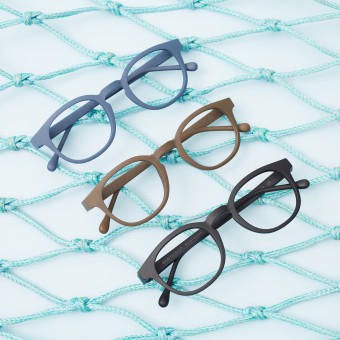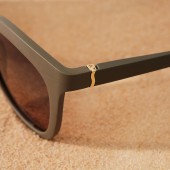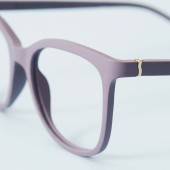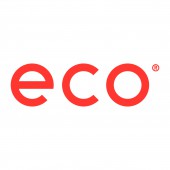Eco Ocean Eyewear Collection by Eco Eyewear |
Home > Winners > #116118 |
 |
|
||||
| DESIGN DETAILS | |||||
| DESIGN NAME: Eco Ocean PRIMARY FUNCTION: Eyewear Collection INSPIRATION: We wanted to turn the trend of littering the oceans by showing that plastic waste is a valuable resource to be re-used over and over. What better way to do that than to turn it into an everyday object used by many people? We believe that big change comes in the form of many small ones, and therefore our goal was to make the collection attractive to as many as possible, both through well-balanced aesthetics and comfort as well as a low price point. UNIQUE PROPERTIES / PROJECT DESCRIPTION: Eco Ocean optical and sun frames are made from recycled ocean plastic waste, such as old ropes from the maritime industry. The idea behind the collection is to help clean the oceans while showing off plastic waste as a resource that can be used over and over again. The collection consists of bold yet easy-to-wear frames. They are lightweight and super comfortable with a smooth, matte finish in ocean-inspired shades. A wave-shaped hinge hints at the story behind the frames without being too outspoken. Each frame comes in a case made from recycled PET fabric. OPERATION / FLOW / INTERACTION: The Eyewear collection will be sold mainly through optical stores all over the world. The collection will also retail in some selected clothing stores as well as online through our website, eco-eyewear.com. The packaging for the frames is also made to tell the story of the frame origin of recycled ocean plastics. PROJECT DURATION AND LOCATION: Project duration was approximately one year and was conducted in Stockholm, Sweden as well as in Wenzhou, China. |
PRODUCTION / REALIZATION TECHNOLOGY: To gather fishing nets, ropes, and trawls from the ocean, we teamed up with Waste Free Oceans, an NGO that works with local fishermen who collect the used plastic. These items then get checked, cleaned, cut, dried, and prepped. After that they get extruded into the plastic granules that in turn is injection molded into our Eco Ocean frames. We add a little bit of pigment and also a process stabilizer that ensures that the frames can be recycled again. SPECIFICATIONS / TECHNICAL PROPERTIES: Approximately 150 x 20 x 50 mm. The recycled polypropylene makes the frames lightweight and flexible. The coating has a hard top layer, ensuring that the frames keep their good appearance and last for a long time. The frames come in a case made from recycled PET fabric. TAGS: Glasses, eyewear, frames, sunglasses, Ocean plastic, Ocean clean-up, Sustainable, Recycled, optical, sun RESEARCH ABSTRACT: Research was initially conducted on possible reliable suppliers of the material, and we ultimately decided to use the material sourced by Waste Free Oceans, who conduct regular ocean clean-up missions. Research was conducted on possible ways to manufacture the material in order to achieve the best possible material properties suited for eyewear frames. The ideal manufacturing process was to receive the material in pellet-form and injection mold it for good precision of shape. This also suited our existing know-how in eyewear manufacturing. Our previous eyewear collections provided sufficient knowledge and good channels to find out whether consumers would be interested in this type of product. CHALLENGE: The main challenge was to achieve a high-quality level of the material and a well-balanced colour palette without using virgin material. For the first tests, the material was much too soft to be durable enough as eyewear. The solution was to add a little bit of calcium to the material in order to increase hardness while maintaining high flexibility in the material. We also adjusted the design to allow for slightly thicker dimensions, which turned out to have aesthetic advantages as well. The surface coating was initially too soft, prone to scratching, and generally too sensitive when inserting glass lenses. We tried several surface coating methods since Polypropylene is generally difficult to coat. It turned out that the material requires a much longer drying time than our regular Biobased material before coating. We ended up with a very good scratch-resistant matte finish. In terms of colouring the material, the first tests included simply painting the frames after the injection molding. This did give a hard surface, but was not satisfactory as the paint may shave off after long-term use. Also, the paint contains toxic substances and decrease recyclability of the frames. Instead, pigment was added to the master batch before injection, and after many tests we had a good looking colour range ADDED DATE: 2021-01-18 14:23:07 TEAM MEMBERS (1) : IMAGE CREDITS: Eco Eyewear, 2020. |
||||
| Visit the following page to learn more: https://www.eco-eyewear.com/ | |||||
| AWARD DETAILS | |
 |
Eco Ocean Eyewear Collection by Eco Eyewear is Winner in Sustainable Products, Projects and Green Design Category, 2020 - 2021.· Read the interview with designer Eco Eyewear for design Eco Ocean here.· Press Members: Login or Register to request an exclusive interview with Eco Eyewear. · Click here to register inorder to view the profile and other works by Eco Eyewear. |
| SOCIAL |
| + Add to Likes / Favorites | Send to My Email | Comment | Testimonials | View Press-Release | Press Kit |
Did you like Eco Eyewear's Sustainable Product Design?
You will most likely enjoy other award winning sustainable product design as well.
Click here to view more Award Winning Sustainable Product Design.








